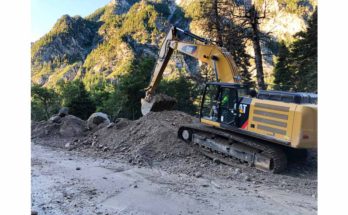“Ski/Board/Ride to live another day.”
—Mantra of wise backcountry recreationists.
The observation below is just a sample of the work that goes into assessing snow stability. Utah Avalanche Center staff do this work daily through out the Winter along the Wasatch Mountains and in other regions of Utah. (There are other similar avalanche related organizations in most regions of the United States where snow and steep mountains exist and they all do similar work to generate daily hazard forecasts.)
This observation is remarkable in that it’s a deep snow study pit with a distinct fracture occurring during testing. This will be unfamiliar for those who are not accustomed to skiing in hazardous backcountry environments.
Field Observation: Mt. Nebo, March 5, 2019
Santaquin Canyon to Nebo Loop Rd.
Source: Utah Avalanche Center
Trent Meisenheimer & Mark Staples
There remains the possibility that you can trigger a very large and destructive avalanche in the Nebo area. In places where the snowpack is greater than 200 cm the chances of triggering a slide is low. The likelihood is low, but the consequences are devastating. The other thing to consider is that over the next several days the snowpack will become more and more stressed by heavy snowfall and strong winds. This will increase the likelihood of triggering avalanches.
In repeater paths where the snowpack is less than 100 cm the likelihood is increased even more so. As seen in our snowpit profile there is a deep and strengthening snowpack. However, it’s not green light just yet. Anytime, we get propagation in our snowpit tests a huge red flag goes off in our heads (see picture two). We were still finding very weak snow near the ground and in the midpack.
At this point, I would need more information or more time to get after the big runs on the Nebo massiff.
Read the full Field Observation »

“Another large recent avalanche was spotted one bowl south of Middle Basin. This looked to be confined to the new snow (mid pack) and was likely 2-4′ deep and roughly 1,300′ feet wide running 3,400′ vertical feet.”

Close-up of one bowl south of Middle Basin.

Arrows show point of failure during stability test.

 “Trent pointing at the two weak layers that propagated in our tests.”
“Trent pointing at the two weak layers that propagated in our tests.”
 Weak faceted snow that the fracture propagated on.
Weak faceted snow that the fracture propagated on.


 Location of field observation.
Location of field observation.






